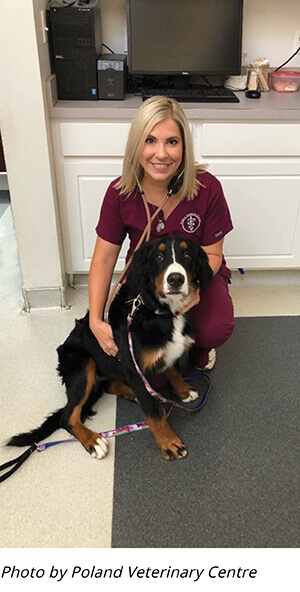It is important to honor veterinary technicians and bring awareness of their importance in veterinary medicine. Veterinarians would not be able to run their hospital effectively if veterinary technicians were not there to hold it all together. They are highly educated and skilled and are an integral part in handling the animals and educating owners, but many don’t realize what a veterinary technician does every day. They don’t just hold animals during an exam.
Veterinary technicians have a great desire to work with animals and that is why education is so vital for this career. You will see veterinary technicians in hospitals, specialty clinics, research labs, animal shelters, zoos and wild life centers. The education required to become a veterinary technician is not easy. It is actually rather hard and requires a lot of hands–on and willingness to put all effort in to be able to take care of the animals and do no harm.
TECHNICIAN EDUCATION
A licensed veterinary technician, or RVT, LVT, or CVT, earns an associate degree in a veterinary technology accredited program. The program must be an accredited AVMA school and the program must meet CVTEA accreditation. Many technicians go on and further their education and earn a Bachelor of Science in veterinary technology. There are also veterinary technician specialties.
The NAVTA Committee on Veterinary Technicians Specialties (CVTS) was formed in 1994 and is recognized by the American Veterinary Medical Association. The CVTS provides guidelines to veterinary technician organizations to facilitate the formation of a specialty organization. Academies develop advanced pathways, which a candidate must follow and complete in order to be awarded the designation of VTS (Veterinary Technician Specialist) in their specific discipline.
When you look at the amount of education a veterinary technician is required to become licensed or can further their education, this is quite a commitment they make to the animal profession.
In the day of a Technician

Following are the day–to–day duties of Shannon Patsko, RVT, from the Poland Veterinary Centre in Poland, Ohio.
“A normal day for me is usually crazy with me running around the clinic, performing all types of job duties. Some may think it is impossible to perform or complete all my duties in one day, but I do.
In the morning, I admit patients for surgery and perform pre–anesthetic physical examinations, obtain lab work, calculate doses of medications and fluids, and administer medications according to protocol. This is all done before we start seeing patients for the day. I check patients in for exams and assist in physical assessments, administer vaccines and educate clients with the latest information available in veterinary medicine.
My daily responsibilities include, operating laboratory equipment to evaluate chemistry panels and CBC, interpreting urinalyses, intestinal parasite exams, cytology exams, blood smears and radiographs. I also assist our veterinarians in surgery. Typical procedures include, gastropexy, orthopedic surgeries, exploratory laparotomy and cystotomy. When I’m not assisting, I monitor our patients under anesthesia, operate monitoring equipment and maintain normal parameters of vitals.
Then there are those times where an emergency comes in and now I’m in triage mode. Yes, veterinary technicians make decisions on this, too. We assess the animal’s condition, take vitals and then discuss the evaluation with the veterinarian for treatment.
One of my favorite aspects of my job is dentistry. I regularly complete oral assessment, treatment and prevention; scale, polish, probe, chart and obtain intraoral radiographs. I administer local nerve blocks, prepare periodontal equipment and assist the veterinarian in surgical extractions.”
VETERINARY TECHNICIAN CHALLENGES
As you can see, veterinary technicians are nurses, laboratory technicians, anesthetists, surgical assistants, radiologists, dental assistants, educators, and most of all, an advocate for the patients.
One big challenge is salary or wage. Their salary is lower than many other comparable jobs in medicine. This career requires devotion and compassion, and veterinary technicians realize they will not get paid that well for everything they do. But they are there every day as an advocate for the animal and devoting hard work to assure the animal lives a long life.
However, with all this hard work, there are many other challenges to being a veterinary technician. Many times, they are preparing emotionally for a euthanasia that is scheduled to come in. Sometimes the patients live a long time, and for others, their lives are cut short due to disease or other unforeseen circumstances. There is a lot of grief that a technician feels for their patients. It does not matter how many years one has been a veterinary technician, the grief is always the same and can become overwhelming.
Not only is their concern for the pet, but also for the owner. They explain to the owner what is going on, step–by–step, to make an unbearable moment as comfortable as possible. A veterinary technician’s compassion is remarkable.
The future is very promising for veterinary technicians. One student from the San Juan College Veterinary Technician Distance Program has taken the program to become licensed so she can further her education to perform Physical Therapy for animals. There are technicians working in Mobile Veterinary Clinics, reaching those areas that may not have access to veterinary care. The future is inspiring as to what these technicians, or “Angels for Animals,” can bring to the veterinary profession and care for the animals. +
October is National Veterinary Technician Month!

